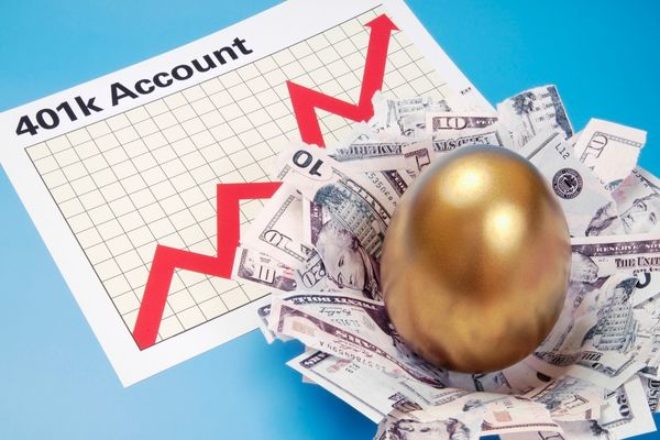
The 401(k) is the greatest wealth creation tool ever invented. Hands down. Bar none. No investment vehicle has created more spendable wealth for Americans than 401(k) plans. Real estate deserves honorable mention as an asset, but not one you can readily exchange for food or heat in retirement. Your residence often helps your heirs more than it helps you — other than as a place to live.
The 401(k)’s astounding ability to create wealth is driven by the magic of pre-tax contributions. And some other near-magic features.
Types of Plans
The most common retirement plans are the 401(k) and its nonprofit sister, the 403(b), as well as traditional and Roth IRAs.
Traditional 401(k)s, 403(b)s, and traditional IRAs generally have investors making pre-tax contributions. Their Roth counterparts are funded with after-tax contributions.
All of these are retirement plans and grow on a tax-deferred basis for your retirement accumulation. All can be subject to premature withdrawal penalties, which can result in both taxation and an additional 10 percent penalty, making them expensive funds to use for any purpose other than retirement.
An App That Can Be Managed by Parents
The Magic of Pre-Tax
The magic of pre-tax is immediate leverage; you get an immediate return on your investment simply by making a pre-tax contribution. Bam.
For example, let's say you are in the 22 percent federal tax bracket and decide to contribute $100 per week into your 401(k) on a pre-tax basis.
Your $100 contribution is deducted from your income before your withholding is taken out; you’ll have a $78 reduction in your take-home pay — $100 contribution to your retirement plan and a $22 tax savings offsetting your contribution. Your actual cost of making the $100 contribution is the $78 reduction in your take-home pay; you achieve an immediate 28 percent return on your $78 investment ([22/78] X 100). Wow.
And it could be better. It could also be lower, if you’re in a lower tax bracket. It could be better if you are also subject to state income tax.
Let’s look at this again with state income tax in the mix.
Let’s say you plan on making a $100 pre-tax contribution to your 401(k) and are in a 22 percent federal tax bracket and a 5 percent state tax bracket. The combined tax load is 27 percent. Now your $100 pre-tax contribution will lower your take-home pay by $27 per week, or the $100 contribution costs you $73 as a reduction in your weekly take-home pay.
That’s an immediate return of about 37 percent. And it’s a guaranteed return, based on those tax brackets. Amazing. But what about Roth plans?
Roth Retirement Plans
Roth retirement plans don’t allow for pre-tax contributions; you’re using after-tax money to fund those plans. Many advisors recommend splitting equally between Roth and traditional options. I think that’s bad advice; it’s based on a false equivalency. A contribution of $100 per week into a Roth plan does not have the same cost as a $100 per week into a pre-tax plan does.
Start by Getting a Free Analysis
If you’re in a 22 percent federal tax bracket and a 5 percent state tax bracket; a $100 contribution to a Roth plan will reduce your take-home pay by $100; a $137 pre-tax contribution will also reduce your take-home pay by the same amount. That’s your real equivalency, the cost of a $100 Roth contribution is the same as the cost of a $137 pre-tax contribution at a 27 percent combined tax bracket.
In general, investors will have more spendable money in retirement for an equal cost of investment by investing pre-tax instead of investing in Roth accounts; assuming relatively similar tax rates exist at the time of retirement. If you have a lower tax burden in retirement, which is quite likely, you will have more spendable money even after paying the taxes on the pre-tax funds.
If you are in a zero percent tax bracket while working, do the Roth!
And we haven’t even brought matching contributions into the equation.
More Magic: Matching Contributions
Many 401(k) plans have matching contributions provided by the employer. These are an incentive to participate, and they’re another form of magic in terms of your invested dollars.
Let’s walk through the above scenarios again, but add matching contributions into the mix. The most common form of matching contribution is where the employer matches 50 percent of the employee’s contributions, up to 6 percent. For example, if you contribute 4 percent of your pay, the employer contributes an additional 2 percent; if you contribute 6 percent of your pay, the employer contributes an additional 3 percent; and if you contribute 8 percent of your pay, the employer contributes an additional 3 percent — they only matched on your first 6 percent.
I’m going to do this two ways. First I’ll assume that the $100-per -week contribution is 6 percent and gets the 50 percent match on the entire contribution. Then I’ll assume that 6 percent is $50 of the $100 contribution, giving us some numbers for a lower income employee. Here are four scenarios.
- For a $100 pre-tax contribution, 22 percent federal tax bracket, no state tax, and 50 percent employer match on the entire contribution yields a total of $150 contribution into the 401(k) for an out-of-pocket cost of $78 — an immediate return of over 92 percent.
- The same as scenario one but including a 5 percent state tax bracket, yields a total contribution of $150 for a $73 out-of-pocket cost — an immediate return of over 105 percent.
- For a $100 pre-tax contribution, 22 percent federal tax bracket, no state income tax, and a 50 percent employer match on $50 of the contribution yields a total contribution of $125 for a $78 out-of-pocket cost — an immediate return of 60 percent.
- The same as scenario three but with the addition of a 5 percent state income tax, a total of $125 contributed for an out-of-pocket cost of $73 — an immediate return of 71 percent.
The magic of pre-tax contributions, coupled with the magic of company matching, make the 401(k) plan the greatest wealth accumulation vehicle ever invented. Bar none.
Tips for Retirement Accumulation
Doing anything is greater than doing nothing. Make whatever level of retirement contributions you can make — but make something. Try to take advantage of all of the matching and then some.
Time in the market beats timing the market. Time in the market allows your investments to compound over time. Timing the market is not possible on any consistent basis. Luck is not a strategy. Invest and stay invested, that’s the proven method.
Make annual increases to your retirement contributions. If you make contributions of 4 percent, for example, increase that to 5 percent for next year, then 6 percent the year after. Making small increases to your contributions has minimal impact on your budget; over time gets you to making significant contributions to your retirement.




